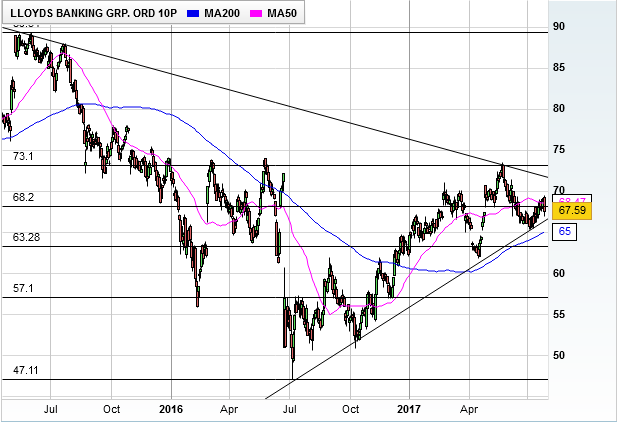The worst is still not over for Lloyds
27th July 2017 11:06
by Graeme Evans from interactive investor
Share on
A decade on from the financial crisis, past misdemeanours and legacy issues continue to cloud the investment case for the UK banking sector. Take , whose results Thursday showed its biggest half-year profit in eight years and a further improvement to its recently restored dividend.
Out of government ownership and now a bastion of many portfolios, Lloyds is seen as well-positioned for anything the UK economy can throw at it, given its defensive loan portfolio and high levels of liquidity.
But anyone thinking that the worst is over for Lloyds should look no further than pages 69 to 73 of its annual results and "provisions for liabilities and charges".
It's not just the extra £1.05 billion PPI provision, which takes the running total to an eye-watering £18 billion. There's an added £95 million relating to the alleged mis-selling of packaged bank accounts, while the group has set aside £552 million for reimbursing mortgage arrears fees to around 590,000 customers.
These and other provisions continue to have a major impact on its financial performance, meaning profits of £2.5 billion for the first six months of the year were up by a lower-than-expected 4% compared with a year ago.
The scale of the PPI provision is all the more disappointing as a year ago it appeared that the worst was over on this particular mis-selling scandal.

Shares were down more than 1% today following the results, and have weakened 7% since reaching a 12-month high of 73.51p in late May.
One explanation for this bearish sentiment is concern in some quarters about the outlook for Lloyds' net interest margin (NIM) and level of loan impairments.
The NIM is a key measure of bank profitability, and shows the difference between what a bank pays to get deposits and what it charges to lend money. There was some reassurance on this from Lloyds today, with the NIM up eight basis points to 2.82% and on track to reach 2.85% by the full year.
It said the improvement continued to be driven by lower deposit and wholesale funding costs, which have more than offset reduced lending rates.
The impairment charge increased by £23 million to £268 million in the first half, although Lloyds said asset quality remained strong. Impairments have been helped by continued lows in unemployment and the Bank of England base rate, while the Lloyds product mix is also heavily skewed towards low-risk assets.
The next landmark in the Lloyds recovery is likely to come in February, when chief executive António Horta-Osório is due to announce a strategy update for the period 2018-2020. By then investors will be hoping for a little more clarity on legacy issues, even if the economic uncertainty does persist.
In the meantime, UBS has retained its 'buy' rating on Lloyds, with a price target of 85p. Today's interim dividend was lifted by 18% to 1p a share.
This article is for information and discussion purposes only and does not form a recommendation to invest or otherwise.The value of an investment may fall. The investments referred to in this article may not be suitable for all investors, and if in doubt, an investor should seek advice from a qualified investment adviser.